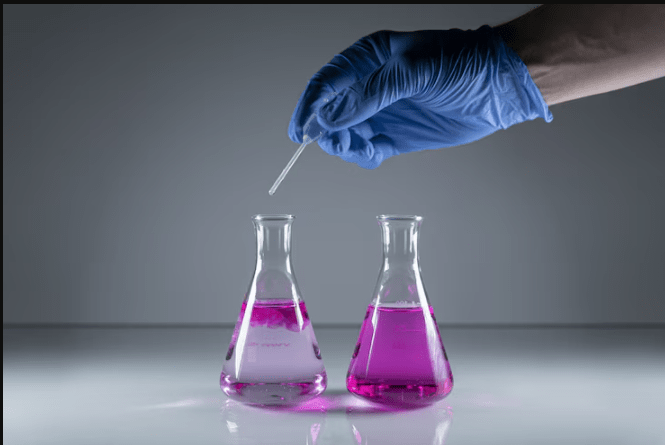If you’re involved in the production or purification of monoclonal antibodies (mAbs), you’re no stranger to the challenges that come with separating high-value biologics from complex biological mixtures. At the core of a streamlined antibody purification workflow lies one of the most effective tools in the bioprocessing arsenal—Protein A chromatography resin. This resin is not only the industry standard for capturing antibodies but also the pivotal point where science meets process efficiency.
In this comprehensive guide, you’re going to unpack the fundamentals and practical strategies to maximize the potential of Protein A resin in your lab or production facility. Whether you’re scaling up, developing a biosimilar, or running a tight, high-throughput screening program, the following insights are designed for real-world application.
Why Protein A Chromatography Resin?
When you tag your antibodies with specificity, you need an equally precise way to isolate them. That’s exactly what Protein A offers. Originating from Staphylococcus aureus, Protein A binds specifically to the Fc region of immunoglobulin G (IgG) molecules. This high-affinity interaction forms the basis of a fast, selective, and reproducible purification process.
The power of Protein A chromatography resin lies in three essential qualities:
Exceptional Selectivity: It binds most subclasses of IgG with nanomolar affinity.
Scalable Application: It’s suitable for both lab-scale and industrial-scale production.
Process Simplicity: It reduces downstream purification steps due to its high purity yields.
You don’t need to engineer your antibodies to suit the resin—it naturally accommodates most mammalian-produced mAbs. That means fewer workarounds and better recovery.
Choosing the Right Resin: Critical Considerations
All Protein A resins are not created equal. If you’re using an outdated resin or one not optimized for your target antibody, you’re probably leaving money, time, and performance on the table.
Here are a few things to evaluate when choosing your resin:
Ligand Type: Native vs. recombinant Protein A can affect binding kinetics and leaching.
Base Matrix: Agarose, polymer, and glass beads differ in flow rates, rigidity, and chemical resistance.
Binding Capacity: Measured in mg/mL—high-capacity resins mean fewer columns and more efficiency.
Alkaline Stability: If you’re cleaning-in-place (CIP) with NaOH, resin durability is a must.
If you want an in-depth comparison of commercial options or user feedback, you might want to look at this web-site for detailed product matrices and application notes.
Preparing for Purification: Set Yourself Up for Success
Before running any antibody through your Protein A column, take a moment to set the stage properly. Your purification success hinges on your upstream prep.
Clarify Your Sample: Centrifuge or filter your culture supernatant to remove cells and debris.
Adjust Buffer Conditions: Typically, a binding buffer of PBS or Tris at pH 7.0–8.0 is used.
Avoid Harsh Detergents: Stick to non-ionic or zwitterionic detergents that won’t denature proteins or interfere with binding.
Monitor Conductivity and pH: You want optimal conditions to favor maximum binding.
Clean input means fewer variables. Don’t skip this part—it’s your chance to eliminate 90% of downstream headaches.
Binding and Washing: Efficiency Without Compromise
Now that your sample is ready, the binding step is where the magic begins. Protein A resin offers a straightforward workflow—load, bind, wash, elute—but execution matters.
Loading: Load your clarified sample onto a pre-equilibrated column. Avoid exceeding the dynamic binding capacity (DBC).
Flow Rates: Moderate flow rates (~150–300 cm/h) allow effective interaction between antibody and resin.
Washing: Use a mild buffer (e.g., PBS) to remove loosely associated proteins.
Pro tip: Keep your temperature consistent. Binding efficiency can drop with significant fluctuations.
Elution: Reclaim Your Antibodies Cleanly
Elution is where you recover your valuable product. With Protein A resins, the elution buffer is typically acidic—usually glycine-HCl at pH 2.5–3.0. These conditions disrupt the Fc-Protein A bond.
Here’s how to optimize the elution:
Step Elution: Elute with a fixed pH to collect a single peak.
Gradient Elution: Use if you want to fractionate closely related antibodies or identify isoforms.
Neutralize Immediately: Use Tris or another neutralizing agent to bring your product to pH ~7.4 right after elution.
This is a crucial step. Acidic conditions can damage sensitive proteins if neutralization is delayed. Always have your neutralizer ready in collection tubes.
Cleaning and Regenerating Your Resin
Protein A resins are not cheap. You’ll want to regenerate and reuse them efficiently—especially in continuous manufacturing settings.
Cleaning-in-Place (CIP): Most modern Protein A resins tolerate up to 0.5–1.0 M NaOH.
Strip and Sanitize: Use buffers with chaotropic agents or organic solvents for stripping tightly bound impurities.
Avoid Physical Damage: Don’t exceed recommended pressures or flow rates. Swollen or crushed beads reduce column efficiency.
If maintained well, high-end Protein A resins can handle up to 100–300 cycles without significant performance loss. That’s money saved.
Dealing with Common Problems
Even with a robust method, hiccups happen. Here’s how to deal with common issues in Protein A chromatography:
Low Recovery: Recheck binding pH and ensure the sample doesn’t contain interfering agents like EDTA.
Protein A Leaching: Use high-quality, cross-linked recombinant Protein A resins with low leaching profiles.
Non-Specific Binding: Increase wash volume or modify the ionic strength of the buffer.
Running into these issues repeatedly? It might be time to evaluate a new resin format or column design.
From Lab Bench to Bioreactor: Scaling Up the Right Way
You’re not just purifying milligrams anymore—you’re purifying grams or even kilograms. Scaling up Protein A purification requires more than bigger equipment.
Linear Scale-Up: Match column height and bed volume to maintain residence time.
Automation Integration: Use bioreactor-friendly chromatography systems (like ÄKTA) for consistent cycles.
Batch vs. Continuous: Evaluate if multi-column continuous chromatography improves yield and reduces buffer usage.
Scalability is the reason Protein A resin dominates in mAb production—it behaves consistently whether you’re processing 1 mL or 100 liters.
Applications Beyond Antibody Purification
Although it’s famed for monoclonal antibody capture, Protein A resin can serve other useful roles:
Antibody Fragment Isolation: F(ab) and Fc fragments can be selectively separated using pH shifts.
Protein Complex Studies: Pull down antibody-bound complexes while preserving native structures.
Biomarker Research: Enrich specific immunoglobulins from serum samples for diagnostics.
Its versatility is a hidden gem in immunological workflows. If you’re exploring niche applications, it’s worth the time to learn more here about creative and validated use cases from leading researchers.
Future of Protein A Chromatography: Smart Resins and Cost Savings
The field of antibody therapeutics is booming—and Protein A technology is keeping pace. You’re seeing more innovations like:
Alkaline-Stable Ligands: For extended lifecycle and harsher CIP routines.
Low Leach Resins: Minimizing residual Protein A in your final product—critical for regulatory approval.
High-Capacity Formats: Resin formulations that can bind >80 mg/mL for fewer purification steps.
Some companies are even developing membrane-based Protein A systems, offering flow rates that dwarf traditional columns with no compromise in purity.
Being on top of these innovations can dramatically impact your cost-per-gram and speed-to-clinic timelines.
Final Takeaway: Control the Critical Step
As someone responsible for developing or producing monoclonal antibodies, you’re managing one of the most valuable molecules in modern medicine. From cancer therapeutics to autoimmune treatments, mAbs are revolutionizing healthcare—and your ability to purify them matters.
Protein A chromatography resin isn’t just a convenience. It’s the cornerstone of your bioprocess. When selected wisely, maintained correctly, and optimized continuously, it gives you unmatched control over yield, quality, and reproducibility.
Every buffer you mix, column you pack, and elution you collect is a step toward high-impact results. Stay curious. Stay precise. And let your resin do the heavy lifting.














